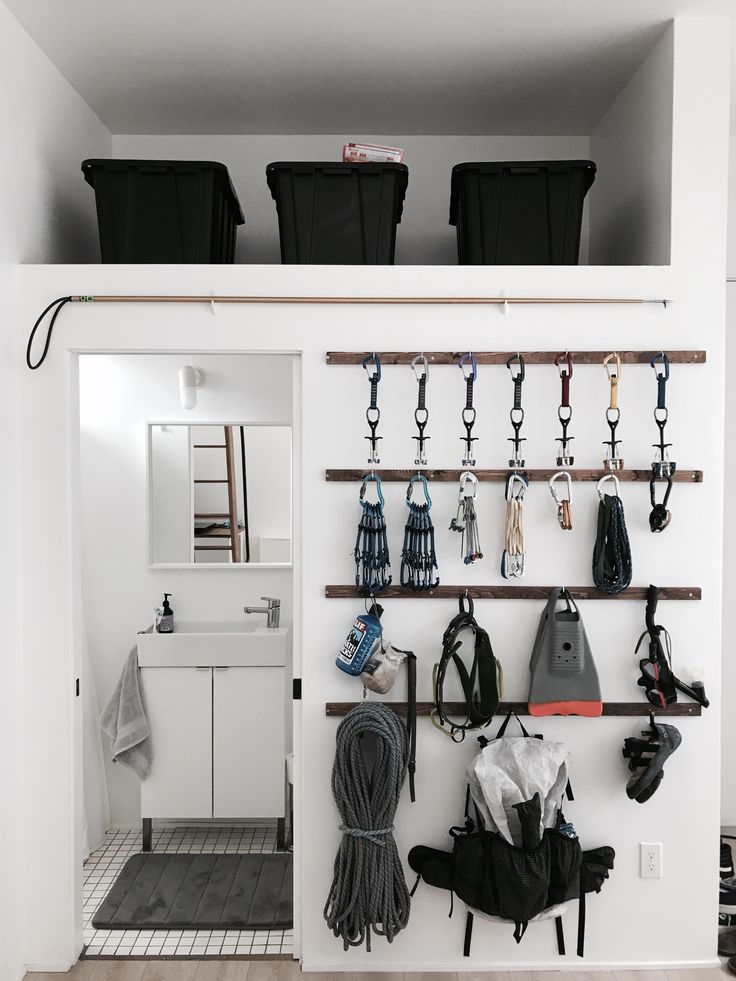Properly Storing Your Gear: A Guide to Keeping Your Equipment Safe and Sound
Whether you're an outdoor enthusiast, a sports lover, or a professional in a specific field, taking care of your gear is essential to ensure its longevity and performance. Proper storage not only keeps your equipment safe but also helps maintain its functionality. In this article, we'll explore the importance of storing your gear correctly and provide you with some valuable tips to keep your equipment in top shape.
12/10/20233 min read


Properly Storing Your Gear: A Guide to Keeping Your Equipment Safe and Sound
Whether you're an outdoor enthusiast, a sports lover, or a professional in a specific field, taking care of your gear is essential to ensure its longevity and performance. Proper storage not only keeps your equipment safe but also helps maintain its functionality. In this article, we'll explore the importance of storing your gear correctly and provide you with some valuable tips to keep your equipment in top shape.
Why Proper Gear Storage Matters
When you invest in quality gear, it's crucial to protect your investment by storing it properly. Here are a few reasons why proper gear storage matters:
Preserve Performance: Storing your gear correctly helps maintain its performance over time. Whether it's camping gear, sports equipment, or professional tools, proper storage prevents damage and ensures that your gear functions as intended.
Extend Lifespan: By storing your gear in the right conditions, you can significantly extend its lifespan. This means you won't have to replace your equipment as frequently, saving you money in the long run.
Prevent Damage: Improper storage can lead to damage such as rust, mold, or warping. By following proper storage practices, you can minimize the risk of these issues and avoid costly repairs or replacements.
Tips for Proper Gear Storage
1. Clean and Dry Your Gear
Before storing your gear, make sure it's clean and dry. Dirt, sweat, and moisture can cause damage over time. Here's how to clean and dry different types of gear:
Clothing and Fabric Gear: Follow the manufacturer's instructions for cleaning and drying. Use appropriate detergents and avoid using bleach or harsh chemicals that can degrade the fabric.
Sports Equipment: Wipe down sports equipment with a clean cloth to remove dirt and sweat. For items like helmets or pads, use mild soap and water to clean and let them air dry completely.
Outdoor Gear: For camping gear, such as tents or sleeping bags, follow the manufacturer's cleaning instructions. Make sure they are completely dry before storing to prevent mold or mildew growth.
2. Store in a Cool, Dry Place
The environment in which you store your gear plays a critical role in its longevity. Here are some guidelines for choosing the right storage location:
Avoid Direct Sunlight: Prolonged exposure to sunlight can fade colors, weaken materials, and degrade performance. Store your gear in a place away from direct sunlight.
Control Temperature and Humidity: Extreme temperatures and high humidity can cause damage to your gear. Aim to store your equipment in a cool, dry place, away from basements, attics, or areas prone to moisture.
Consider Climate-Controlled Storage: If you have valuable or sensitive equipment, it may be worth investing in climate-controlled storage units. These units maintain a consistent temperature and humidity level, providing optimal conditions for your gear.
3. Use Proper Storage Containers
Choosing the right storage containers can help protect your gear from dust, moisture, and pests. Here are some container options to consider:
Plastic Bins: Clear plastic bins with lids are a popular choice as they allow you to see the contents without opening them. Make sure the bins are clean and dry before storing your gear.
Garment Bags: Garment bags are ideal for storing clothing and fabric gear. Look for breathable bags that prevent moisture buildup.
Hanging Storage: Hanging storage solutions, such as hooks or racks, are great for organizing and storing sports equipment like bicycles, skis, or surfboards.
4. Organize and Label
Keeping your gear organized not only makes it easier to find what you need but also helps prevent damage caused by improper stacking or handling. Here are some tips for organizing and labeling:
Categorize: Group similar items together, such as camping gear, sports equipment, or tools. This makes it easier to locate specific items when you need them.
Label: Use labels or clear plastic sleeves to identify the contents of each storage container. This saves you time and effort when searching for specific gear.
Stack Properly: When stacking containers, place heavier items at the bottom and avoid overpacking to prevent damage to your gear.
Conclusion
Properly storing your gear is essential for preserving its performance, extending its lifespan, and preventing damage. By following the tips outlined in this article, you can ensure that your equipment remains in top shape for years to come. Remember to clean and dry your gear before storage, choose a cool and dry location, use appropriate storage containers, and keep everything organized. By taking these simple steps, you'll be able to enjoy your gear for longer and get the most out of your investment.
Contacts
Socials
Subscribe to our newsletter
(888) 719-1073
Copyright © Traveltobe.net 2019. All rights reserved
